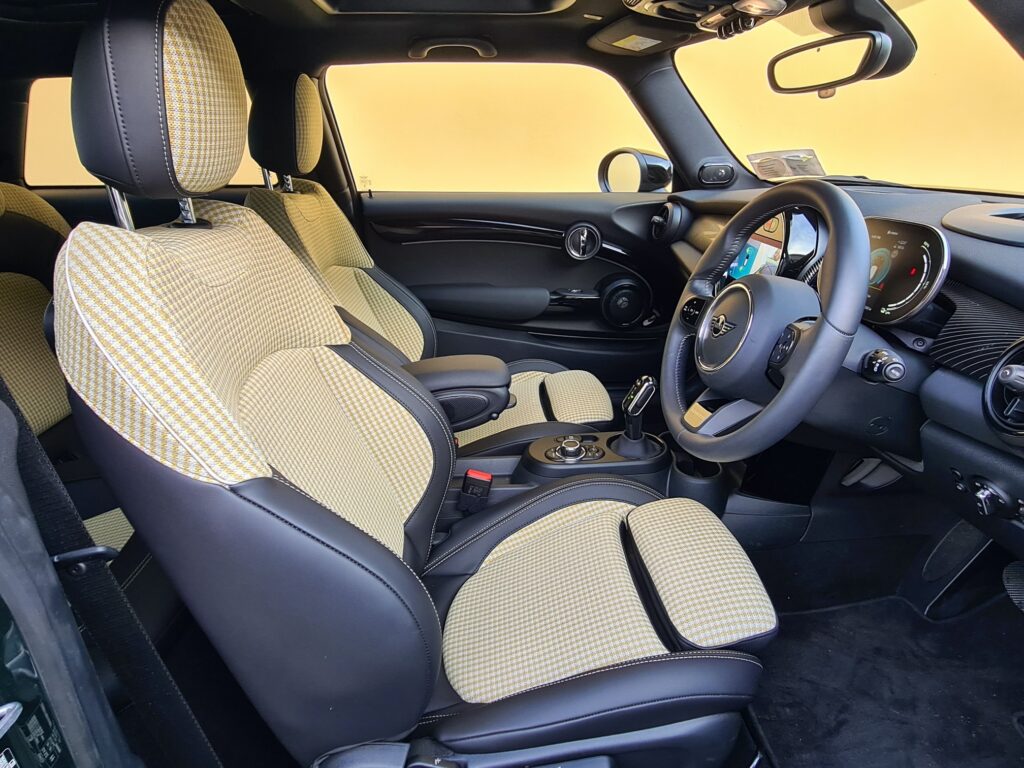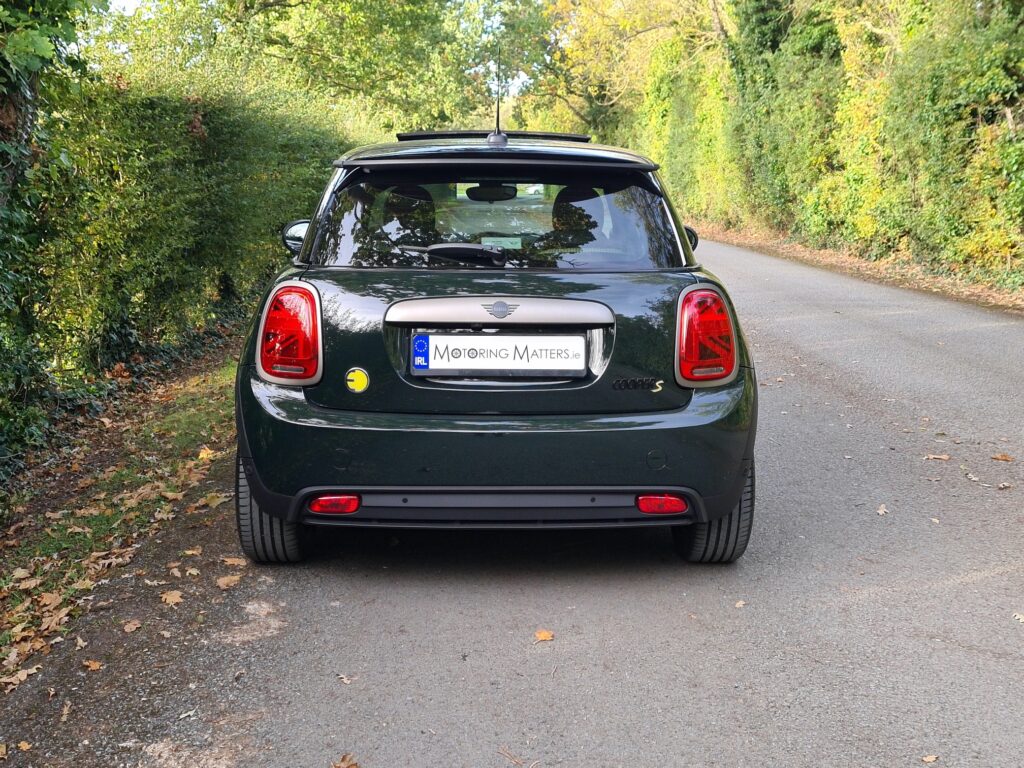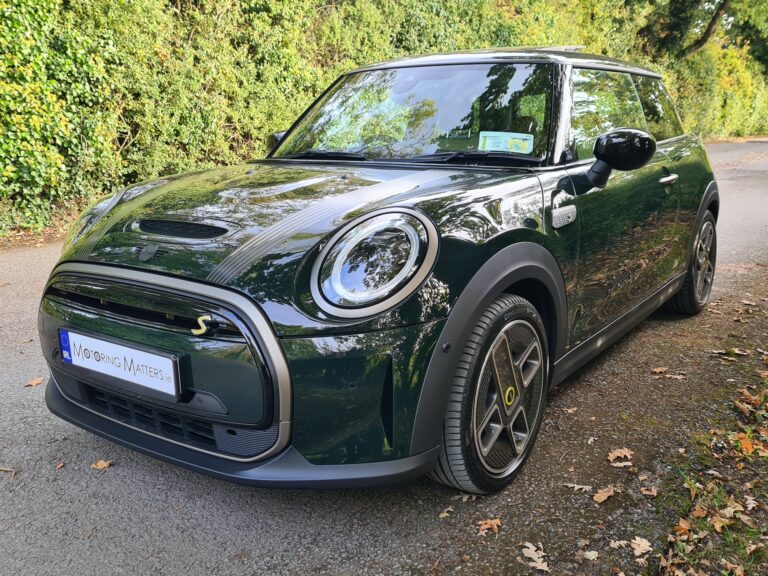By Breda Corrigan

Back in 1959, the Mini name actually began as a model name for two different brands, the Austin Mini and the Morris Mini. These brands were both owned by British Leyland at the time, but in 1969 Mini became a brand in its own right. German car manufacturing giant BMW bought the Mini brand in 2000, and the all-new Mini was launched in 2001 as a modern and desirable car with a retro design language. Undoubtedly, the legendary Mini designer Sir Alec Issigonis, would never have envisaged when he first designed the Mini in 1959 that his iconic British city car would be a silent-running, fully-electric car all these years later.
Retro-Modern Styling.
In 2020 Mini introduced its first fully electric car which was a huge sales success. Now in 2023, this new generation of the Mini is much bigger than its miniscule ancestor, and comes in an assortment of trim levels in order to provide buyers with scope for personalisation. Presently, trim options consist of Level 2, Level 3 and range-topping Resolute trim. Its retro-modern styling still turns heads, and its sporty chassis tuning provides drivers with a sense of fun on every journey. By electric car standards the Mini electric is reasonably priced but it runs on a relatively-small 28.9kWh (usable) battery with an official range of 235-270km to a full charge. However, as is the norm with fully-electric vehicles, the achievable range will be determined by driving style, weather conditions and other external factors.

Test Car Details.
My test car was the Mini Electric in special-edition Resolute trim, and it looked stunning in its Rebel Green paintwork, black roof and black door mirrors, along with exclusive 17” Resolute alloy wheels. The addition of bronze-coloured exterior accents and bronze bonnet stripes add hugely to the exclusivity of this special edition. The classic Mini qualities are evident inside the cabin too, and what comes as standard equipment depends on the trim level chosen, but all trims come with a 5.5-inch colour digital dashboard display which sits smugly on top of the steering column. There is also an 8.8-inch circular central touch screen display within an illuminated circle panel that connects easily with either Apple CarPlay or Android Auto. Visibility is extremely good, even when looking back over your shoulder, due to fairly slim pillars, and the Mini’s compact shape, along with standard-fit parking sensors and a reversing camera make it an easy car to park. Mini’s are famed for their go-kart-like handling, and the Mini Electric is no different. It is a very enjoyable car to drive, with impressive body control and quick steering adding greatly to the overall driving dynamics. Drivers have a choice of four driving modes: Sport, Mid, Green and Green Plus. Sport sharpens up the accelerator response and gives you more of that instantly responsive electric-car feel. The default Mid mode is programmed to provide a good balance between responsiveness and energy use for normal traffic applications. Green requires you to push the accelerator pedal much harder for a good burst of acceleration, encouraging you to drive more efficiently, while the Green Plus mode aims to provide as many kilometres per charge as possible by switching off the air-conditioning and other non-vital functions which use battery power and decreasing the responsiveness of the accelerator. Thanks to the electric motors hefty 270Nm of torque and 184PS (182bhp) power output, the car accelerates with great urgency when you put your foot down. The 0-100km/h sprint can be completed in 7.3 seconds, on its way to an electronically-limited 150km/h (where permitted). Rolling acceleration is similarly strong, and the Mini Electric overtakes effortlessly from any speed. Range is effectively maximised by a two-setting regenerative braking function. Select “high energy recovery” and the electric motor generates serious retardation (and charge) when you lift your right foot. The brakes grip strongly in this mode, but once you get used to it you rarely need to use the brake pedal at all. When it comes to charging the MINI Electric, the fastest 50 kW DC charger will do a 0-80% charge in 36 minutes and a 7.4 kW AC home charger will do a full charge in as little as 3 hours and 12 minutes. Mini’s of all eras have never been renowned for their minimal rear leg room, and the electric model is no different. It is just about ok for adults on short journeys, but children will find the space more acceptable. Potential Mini buyers are unlikely to have rear seat space or boot space at the top of their priority list, but the car’s standard 211-litre boot capacity can be expanded to 731-litres when the rear seats are folded.

Verdict & Pricing.
The Mini Electric is charming, desirable and likeable, and its stylish, high-quality interior makes it a very pleasant car for all occupants. It is fun to drive, and it brings with it cheap running costs too. Pricing starts at €39,985. Visit www.mini.ie for further information.


